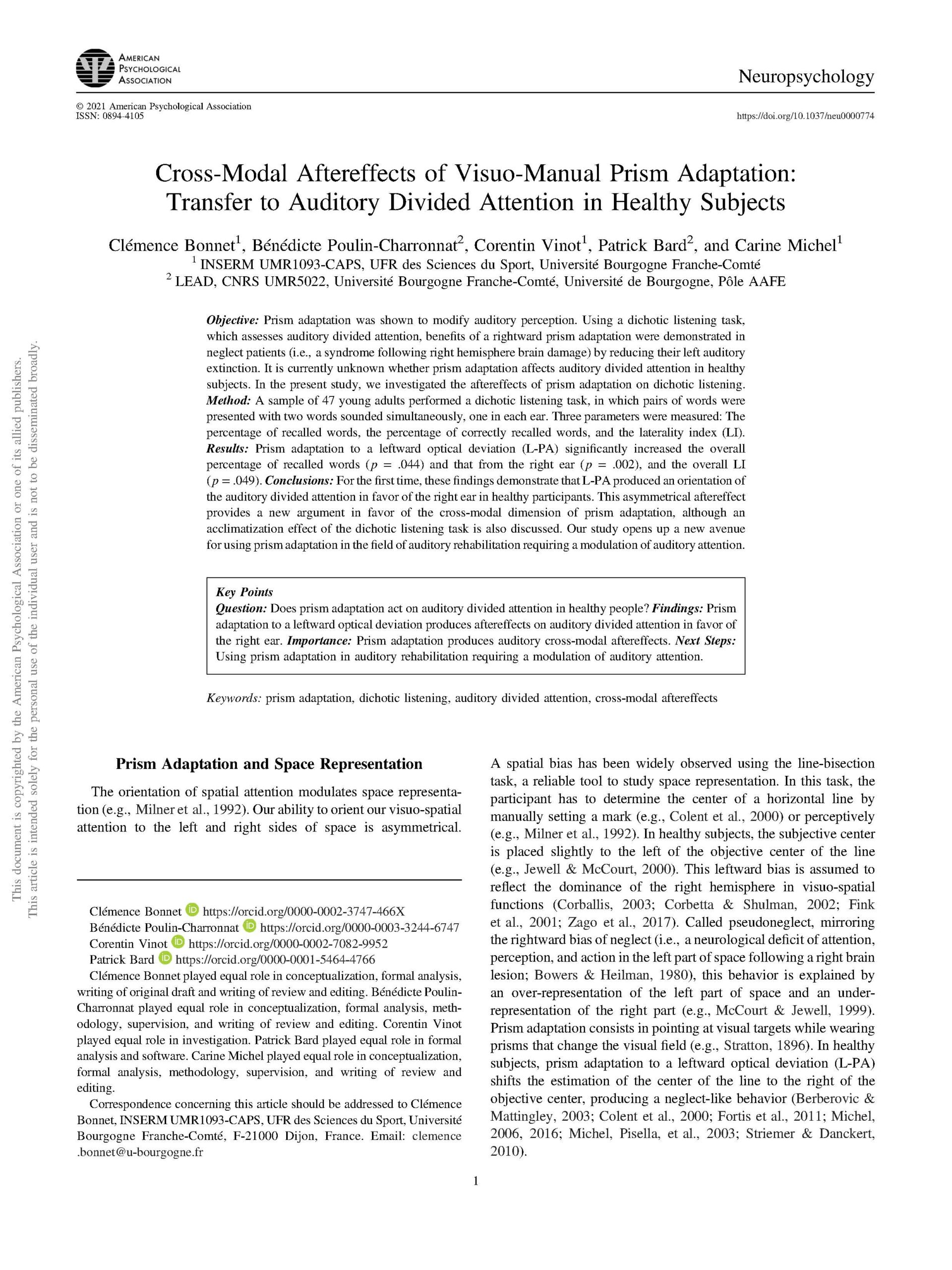Objective: Prism adaptation was shown to modify auditory perception. Using a dichotic listening task, which assesses auditory divided attention, benefits of a rightward prism adaptation were demonstrated in neglect patients (i.e., a syndrome following right hemisphere brain damage) by reducing their left auditory extinction. It is currently unknown whether prism adaptation affects auditory divided attention in healthy subjects. In the present study, we investigated the aftereffects of prism adaptation on dichotic listening. Method: A sample of 47 young adults performed a dichotic listening task, in which pairs of words were presented with two words sounded simultaneously, one in each ear. Three parameters were measured: The percentage of recalled words, the percentage of correctly recalled words, and the laterality index (LI). Results: Prism adaptation to a leftward optical deviation (L-PA) significantly increased the overall percentage of recalled words (p = .044) and that from the right ear ( p = .002), and the overall LI (p = .049). Conclusions: For the first time, these findings demonstrate that L-PA produced an orientation of the auditory divided attention in favor of the right ear in healthy participants. This asymmetrical aftereffect provides a new argument in favor of the cross-modal dimension of prism adaptation, although an acclimatization effect of the dichotic listening task is also discussed. Our study opens up a new avenue for using prism adaptation in the field of auditory rehabilitation requiring a modulation of auditory attention.
Cross-modal aftereffects of visuo-manual prism adaptation: Transfer to auditory divided attention in healthy subjects
